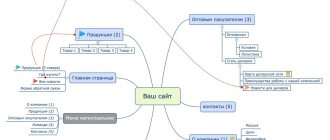One of the features that distinguishes a person from an animal is his ability, when coming into contact with the world around him, to observe, influence it, transform and create something new.
Moreover, often a person acts not limited by the framework of reality, but guided by his imaginary ideas. We will consider the mechanisms of imagination in psychology in this article.
The Essence of Imagination
What is imagination
Every image reproduced by a person is the embodiment of a modified reality.
Imagination is the process of creating new images by transforming ideas obtained in the surrounding reality.
When a person creates something new, he has in his mind an image that does not exist in reality, built thanks to his experience.
Imagination is closely related to memory, thinking and perception. Thanks to the connection between thinking and imagination, it is possible to get out of difficult life situations and solve problems with uncertain conditions.
If it is necessary to reproduce situations from past experience, then a person finds in his memory certain images that he had previously stored.
The perception of life would not be so bright and emotional without the participation of imagination. Throughout human evolution, the process of creating images has been involved not only in the development of work, but also in dreams and plans.
Problems in “Psychology”
1. Based on experience, draw a conclusion about the psychological reasons that prevent the solution of the problem in the second option.
2. What psychological conditions are necessary to successfully solve the problem in the second option?
Solution: The subjects were instructed to use boxes, so in the second case, when the boxes were filled with nails, subjects with a specific type of thinking were unable to abstract from the instructions received, and solving the problem caused them difficulty. To successfully solve a problem, it is advisable not to give any recommendations for a solution.
Topic: Imagination.
Problem 1
1. What provisions characterize the idealistic and which - the materialist understanding of the imagination?
2. Which of the above provisions characterize not only imagination, but also other mental processes?
a) Mental activity, which is not a reflection of reality, but only reveals the internal, subjective states of a person, his affects, impressions, desires;
b) a generalized and mediated reflection of reality;
c) complex mental activity, which is an innate ability that develops gradually, regardless of living conditions and upbringing;
d) reflection of reality, but in other combinations and connections;
e) a reflection of what happened in past experience.
Solution: complex mental activity, which is an innate ability that develops gradually, regardless of living conditions and upbringing, is an idealistic concept in Western European and American child psychology.
A reflection of reality, but in other combinations and connections - a materialistic understanding of the imagination.
Mental activity, which is not a reflection of reality, but only reveals the internal, subjective states of a person, his affects, impressions, desires - consciousness.
A generalized and mediated reflection of reality is thinking.
Reflection of what happened in past experience - memory processes.
Problem 2
1. Indicate in which passage the imagination of the characters is manifested and in which the representation of memory is manifested.
2. By what signs can this be established?
A. ...Andrey immediately called Tsvetkova and, in the presence of Main, asked where she wanted to work. He tried to remain impartial...
Looking into Andrey's eyes, Nina slowly, as if wanting him to stop her, said:
- Allow me to work with Maya Konstantinovna. ... She imagined all this had happened. There will be a ceremonial meeting. Scientists will arrive. Maya Konstantinovna will say from the podium that she owes her success to her, Tsvetkova. Everyone looks around, finds Nina, and invites her to the presidium. She will be in that same dark blue dress. Or not, it will probably happen in winter, she will wear a sweater with deer and high fur boots. Without any shyness, she will simply and modestly tell you how she worked, and, looking around the meeting, she will see Andrei Nikolaevich. She will casually glance at him, and he will blush... no, he will leave the hall with his head down and will remain waiting for her downstairs. When, surrounded by people, she descends the stairs, he will call her away. She will say to her companions: “Sorry, I’ll be there now,” and dryly ask him: “What do you need?” “Nina,” he will say, “forgive me, Nina, I was blind then, I didn’t suspect what kind of person you are...” “You’re late, Andrei Nikolaevich,” she will say sadly and coldly. “Everything in my soul burned out.”
This place looked somehow dubious. And in general, she wasn’t sure whether he would jump up, leave and wait for her downstairs... No, everything would be wrong. “Nina,” he will say...
“Ninochka, do you have a runny nose?” Novikov’s voice rang out in my ear.
“No, why?” she didn’t understand.
- And I see you sitting with your mouth open.
Everything has disappeared... (D. A. Granin. The Seekers. Selected works. in 2 volumes, vol. 1. “Fiction” 1969, pp. 281, 282.)
B. Anton forged two more parts and ruined them: one was skewed, the second did not fill out the mold. In a rage, he slammed his tongs on the floor, rushed to the window, pressed his forehead against the glass and began to cry—from hatred of himself, of the hammer, of being tired, of being hungry, of being late—after midnight, and not a single forging had been a success.
And suddenly, for a moment, he saw his village, his native hut, a pond in front of the windows, tall willow trees densely littered with rooks’ nests, and himself, the little boy Antoshka;
Here he is climbing the willow branches, higher and higher, to the nests, higher than the nests! The rooks flap their wings in alarm, circle around the trees in anxiety, and scream hoarsely and exasperatedly. And from below comes the alarming and at the same time gentle voice of the mother: “Antoshka! Antoshka! Where did you go, little devil? You'll fall! Get down, they tell you! Do you hear? ...Anton woke up when the master touched him on the shoulder. (L. D. Andreev. Wide current. M., Trudrezervizdat, 1955, p. 82
V. Pavel Afanasyevich was silent for many days. And suddenly the solution to the problem came. Suddenly (it always seemed to Pavel Afanasyevich that a hunch dawned on him suddenly) with amazing clarity he presented the design of a mechanical rolling pin.
The idea was so simple that Pavel Afanasyevich was almost afraid of its simplicity and accessibility. (M. Prilezhaeva. Above the Volga. M., “Children’s Literature”, 1962, p. 21.)
Solution: The presentation of the characters appears in passages A and B. In passage A - Nina presented a possible development of the situation with real characters. In excerpt B - Pavel Afanasyevich presented a design that he had never seen, but he had enough knowledge and ideas to combine them. In situation B, Anton remembered his native village and a situation that once happened to him in real life.
Problem 3
1. Determine what type of imagination is manifested in the given passage.
2. Highlight the signs on the basis of which you do this.
A. ...Pneumonia began... Yasha was getting worse and worse, he was very thirsty, but he could not call anyone or get out of bed.
Suddenly he became convinced that he was inside a metal ball, a fantastic interplanetary ship, the same one on which Caver traveled from Earth to the Moon. For some reason the ball was spinning, and Yasha was pressed with great force against its smooth, hot surface. In addition, all objects blurred in waves of pink fog that obscured the eyes... Large rainbow circles flashed in it. Then the circles faded, the fog disappeared, and Yasha was surprised to notice that he was among the stone mountains. It was a strange area - without any signs of vegetation or water. It did not resemble those places in the Urals that Yasha knew, although he had already seen all this somewhere. But where? And then he realized that he was... on the Moon! Unusually large stars were shining in the black sky. They did not flicker and were as bright as the sun hanging over the sharp ridges of the rocks... (B. Fradkin. The Road to the Stars. Perm Book Publishing House, 1958, pp. 78, 79.)
Solution: an involuntary form of imagination - dreams or even hallucinations associated with a painful state, fever and thirst. Images never seen before appeared in my mind.
B. ... Romashov unexpectedly remembered the recent scene on the parade ground, the rude cries of the regimental commander, the feeling of resentment... And immediately, as if in a boy... vengeful, fantastic, intoxicating dreams began to boil within him...
...And Romashov amazingly vividly saw himself as a learned officer of the General Staff, showing enormous promise...
...The maneuvers began. A big two-way fight. Colonel Shulgovich does not understand the disposition, he is confused and fussing. people and he himself is fussing - the corps commander has already reprimanded him twice through an orderly. “Well, captain, help me out. - he turns to Romashov. - You know, out of old friendship. Remember, hehehe, how we quarreled? Please." The face is confused and ingratiating. But Romashov, saluting immaculately and leaning back in the saddle, answers calmly with an arrogant look: “I’m sorry, Mr. Chief... It’s your responsibility to manage the movements of the regiment. My job is to take orders and carry them out...” And the third orderly flies from the corps commander with a new reprimand.
The brilliant officer of the General Staff Romashov goes higher and higher along the path of his career... (L. Kuprin. Duel. Collected works. in 9 volumes, vol. 4. M., “Fiction”, 1971, p. 21 , 22.)
Solution: free creative imagination, i.e. imagination, during which images that have personal value are independently created. The images that appear in the mind are associated with a strong emotional experience; real people are involved in the presented situation, but they have the opposite status. Romashov thus compensates for the insult inflicted on him by his boss, at least in the imagination, because in reality he cannot do this.
Q. ...Even as a child I developed a passion for geographical maps. I could sit over them for several hours, as if reading a fascinating book.
I studied the flows of unknown rivers, the whimsical sea coasts, penetrated into the depths of the taiga, where small circles marked nameless trading posts, repeated, like poetry, sonorous names - the Ugra Shar and the Hebrides, Guadarrama and Inverness, Onega and the Cordillera.
Gradually, all these places came to life in my imagination with such clarity that it seemed that I could write fictitious travel diaries across different continents and countries. (K. Paustovsky. Golden Rose. Collected works, in 6 volumes, vol. 2. M., Goslitizdat, 1957, p. 547.)
Solution: arbitrary recreating imagination, as a result of which new images arise based on the received descriptions. Studying real maps and descriptions allowed a person to imagine himself traveling through these places.
D. The very first tests of the locator prototype revealed the danger of distortion. Several green pulses trembled on the screen, disappearing and reappearing, making it difficult to determine the location of the damage. Invisible electrical storms disrupted the true picture...
...Andrey ordered the entire installation to be dismantled...
Refusing what he had achieved, Andrei could offer nothing in return. He knew one thing - the path they had chosen was wrong. Just look at the diagram: it was complex, ugly and, therefore, somehow vicious...
There come times in the work of a scientist when the imagination runs dry and there is no way to awaken it. Sometimes it lasts for hours, sometimes for years. The knowledge that the solution is close - one effort, one happy thought is enough to find it - is painfully oppressive...
He could not stay in the laboratory; everything here reminded him of his powerlessness. He came out...
... “Wait, please,” Andrey asked pleadingly. He broke off the shavings. The sharp edges dug into the skin. Andrei pulled the ends of the shavings, they compressed and unclenched, springing, they reminded him of the armor of the cable. He stretched the shavings until they broke; then he bent down and picked up a whole heap of prickly shavings. Andrey's face turned slightly pale. The technologist looked at him with interest.
...The discovery always comes suddenly... In just a few seconds, Andrei’s brain imagined the shavings in the form of a special winding, which can be stretched in the same way, changing the characteristic. If you connect such a coil, the distortion will be compensated; he mentally figured out from the formulas how everything would change, and everything, everything became amazingly simple and clear. Immediately, without letting go of the shavings from his hands, he began excitedly explaining to the technologist... (D. A. Granin. The Seekers. Selected production in 2- x t., vol. 1. L., “Fiction”, 1969, pp. 334-346.)
Solution: free creative imagination. Andrey imagined a winding at the place of the shavings, and then, using his recreating imagination, imagined this coil in the current circuit, obtaining a new “necessary” image.
Problem 4
1. Determine what techniques (agglutination, hyperbolization, sharpening, typification) are used to create images of the creative imagination.
2. By what signs can this be established?
A. The myths and legends of antiquity describe various fantastic creatures - centaurs (creatures with the head of a man and the body of a horse), sphinxes - creatures with the head of a man and the body of a lion), dragons, etc.
Solution: agglutination - creating a new image by attaching parts or properties of one object to another in the imagination. Man and lion are real beings, the sphinx consists of a combination of parts.
B. Talking about the creation of literary images, A. M. Gorky said: “They are built, of course, not in portraiture, they don’t take a specific person, but take thirty to fifty people of the same line, one row, one mood and create from them Oblomov, Onegin, Faust, Hamlet, Othello, etc.....” He advised young writers: “If you are describing a shopkeeper, you need to make sure that in one shopkeeper thirty shopkeepers are described, in one priest - thirty priests, so that if this thing is read in Kherson, they see a Kherson priest, and read in Arzamas - Arzamas priest..."
Solution: the technique of typification is used, that is, we are talking about emphasizing the most significant, typical features of the image, “... so that in one shopkeeper thirty shopkeepers are described, in one priest - thirty priests, so that if this thing is read in Kherson, they see a Kherson priest , but in Arzamas they read - the Arzamas priest...”
Q. What technique of creating an image of imagination was used by inventors when designing a snowmobile, an amphibious tank, an airship, an excavator, a trolleybus and other mechanisms?
Solution: the technique of agglutination of a tank and an amphibious tank boat was used.
Types of imagination
Imagination can be intentional or unintentional.
Like memory processes, imagination processes are divided according to the degree of volitional effort into intentional and unintentional.
The unintentional work of the imagination takes place in daydreams, dreams, or half-asleep states.
Images are created spontaneously and in unusual combinations.
This is a passive process, independent of a person’s desires, in which his unmet needs are often embodied.
Intentional imagination is the deliberate process of creating specific images by a person of his own free will. He himself controls and directs his ideas depending on the situation, realizing the purpose and motives of his actions.
Arbitrary imagination has such forms as recreating (reproduction of an image according to its characteristics) and creative imagination (embodiment of a new image through one’s own conjecture).
Recreating imagination works when, having a specific description of an object, a person imagines its full image. For example, when reading fiction, a mental image of the characters or events described is formed.
Creative imagination is the creation of a new image through additions and transformations of an existing one. This kind of imagination is the basis of art.
In the process of creativity, active imagination mainly works, and the conscious formation of an image occurs. The Creator allows you to look at the world from a different perspective, using your means of expression.
Ways to create images, their properties and characteristics
Imagination is a mental process that manifests itself as a result of experienced emotions, both positive and negative. After some event, a person may have pictures in his head. From an early age, a child begins to fantasize and think out ideas, thereby demanding from his parents the satisfaction of his desires. Against the background of perceiving the world around him and absorbing various actions and statements, the baby’s brain is able to form a cunning plan for its own benefit.
Types of imagination and its properties
Thus, a distinction is made between active and passive, as well as productive and reproductive imagination.
Active - occurs when a person specifically reproduces some significant event in his thoughts and adds his desires and expectations to it.
Passive imagination is usually independent of thoughts, and images and pictures appear unexpectedly at any time.
Productive imagination - reality, is consciously constructed by a person, not excluding the addition of creativity.
Reproductive - recreates reality in its original form with a minimal amount of imagination, more reminiscent of memory.
Our imagination has some properties that bring significant benefits to the human brain:
- imagination helps relieve nervous tension , even stress, by switching consciousness to another topic;
- it helps solve problems for successful communication with different sectors of society;
- imagination can teach you to separate events by importance and leave small unimportant tasks for further solution;
- With the help of this property of imagination, we learn to plan, analyze and tune ourselves to certain actions.
There are also some ways to create images:
- Agglutination is the combination of several parts or elements into one single image for the integrity of the picture.
- Emphasis is the selection of something important from the general mass of information; a classic example is a caricature or caricature on the topic of a particular weakness of a person.
- Hyperbolization is a change in parts of an object or image up or down, that is, fantasies about an unusual creature or person.
- Schematization is the smoothing out of differences between objects and highlighting the similarities between them. Examples are patterns and ornaments, elements of which are borrowed from the external environment.
- Typification is the reproduction of an image of a person or a picture through a variety of different similar episodes and images, which is a kind of prototype for the final result when drawing up the desired picture.
Imagination can vary in degree of arbitrariness. Voluntary is considered a conscious, directed activity, performing which a person is aware of its goals and motives. Voluntary imagination includes dreams, creative, creative thinking of a person. An example of involuntary imagination is dreams, in which elements of previously occurring events emerge in the most unexpected forms and images.
Reproduction of images and mental structuring of something also differs in certain ways:
- by the brightness of the images, how clearly a person sees what he wants;
- by the degree of realism and truthfulness of imaginary pictures, by novelty and originality;
- by the breadth of imagination, that is, how diverse you can come up with or draw up an implementation plan;
- by arbitrariness , that is, the ability to train thinking in such a way that the pictures in the head can draw the necessary images in accordance with the task;
- according to the type of ideas that a person can use during the thought process, everything that a person sees, hears or feels can help;
- in terms of stability , how strongly the received and processed information can be consolidated. A person’s attention and the ability to concentrate on important details can play an important role here.
Physiological basis
Combinations of neural connections are formed at conscious and unconscious levels
Physiological processes responsible for the functioning of the imagination regulate the vital processes of the body.
Complex processes occur in the brain, during which nerve connections are activated and redistributed.
As a result of these processes, new neural combinations appear, which are the basis of the physiology of imagination.
Combinations of nerve connections are formed:
- at the unconscious level: from a spontaneous reaction in the cerebral cortex to various stimuli (for example, sleep or hallucinations);
- on a conscious level: in the process of a person’s independent creation of new images, several parts of the brain work (in all voluntary types of imagination).
The formation of new connections is not a random process; it can be described as the creative work of the brain.
Imagination influences many physiological processes: the functioning of organs, the level of activity of glands, metabolic processes. For example, when a person imagines a tasty dish, he salivates more.
When thinking about intense physical activity, you may notice subtle muscle activity. Consequently, imagination is closely related to human life processes and behavior.
Cognitive distortions that prevent you from finding the right solution
The types of errors produced by the fast phase of human thinking include abnormal deviations in the program of brain activity that prevent the adoption of the correct solution to a question:
- an intuitive thinking scenario that forces one to consider an event or judgment to be true based on the availability of searching for a confirming example;
- trust in repeated statements;
- maintaining the apparent truth of a belief despite contradictory arguments;
- rejection of information that can radically transform the formed point of view.
Why we don’t like criticism so much, and how to respond to it correctly, find out here .
Functions of the imagination
Sometimes imagination serves a protective function
The human brain cannot remain inactive for long, so people indulge in dreams.
For the imagination to work, it is not necessary to have new information or solve any problems.
It is known that it is very difficult for a person to stop the imagination and stop thinking at will.
During life, the human imagination performs many functions, the main of which are:
- regulatory – planning the future, presenting ways to achieve goals, regulating and programming activities and their results;
- cognitive – getting to know the world around you through concentration of attention, memory and thinking, activated by imagination;
- adaptive – presentation of complex phenomena and images through simpler ones;
- psychotherapeutic – creating psychological protection;
- affective – changing the emotional state, relieving tension.
Using his imagination, a person controls the processes occurring in the body, and also adapts to various situations. It is known that thanks to imagination you can change your heart rate, blood pressure and body temperature.
The role of imagination in human life
A good imagination is a necessary quality for success.
Unlike animals, man, with his ability to imagine, acts in the future, planning the future.
Imagination stimulates a person to action, forces him to go through a complex, multi-stage path, and encourages him to believe in the result of his work.
But, from another point of view, a dreamer satisfies his needs mentally, refusing real efforts.
Such a negative factor reduces a person’s activity, turning imagination against reality.
Fantasy plays a big role in the production of new inventions. Any modern, familiar object was a figment of human imagination hundreds of years ago.
Through imagination and hard work, new advances are constantly introduced into people's lives. A developed imagination is an essential ability of a successful person.
Stages of imagination development
Imagination is not an innate quality, and it can be developed
However, imagination is not an innate quality.
Its development occurs gradually, in the course of obtaining certain ideas that serve as the foundation for the creation of new images.
The development of imagination is promoted by personal self-improvement, education, training of memory, thinking and feelings.
It is difficult to limit the stages of imagination development by age category, since it depends on individual characteristics.
Based on some regularities, we can say that for the first time imagination is realized through perception. For example, it is difficult for a small child to imagine the plot of a fairy tale, but it is easier for him to imagine the situation happening to himself.
The connection between imagination and perception also manifests itself when the child transfers the received ideas into his games, mentally changing the appearance of objects. The work of imagination in childhood is always associated with activity, in this case – play.
At the stage when a child learns to speak, he begins to form not only images, but also more complex ideas. He has to find words to express what exists in his imagination.
It becomes easier for the child to separate the characteristics of an object from itself and use them to express other ideas. Images spontaneously arise and are combined in a child’s imagination.
At the next stage of imagination, the child can already deliberately recreate images. He begins to control his imagination during games and creative activities, imagining a goal or plot.
At the onset of school age, imagination rises one more level. Making efforts to complete learning tasks, the child actively recreates images and uses existing ideas.
Mechanisms for creating images
Without imagination there would be no books and films
The images that arise in the imagination do not appear out of nowhere. They proceed from received ideas about real phenomena and objects.
Life impressions are combined in a person’s imagination, taking on various forms.
Imagination processes are divided into two levels:
- Analysis of impressions.
- Synthesis of the resulting images.
At the first level, ideas about an object are abstracted from other images, their components are separated, and analysis occurs. Subsequently, these images are transformed: combined into different combinations or reincarnated into completely new ideas.
This synthesizing process takes many forms. Agglutination is one of the common forms of synthesis, during which a new image is created by transferring the characteristics of one object to another.
In this way, images of ancient gods and mythical creatures were created in the imagination. The technique of agglutination is widely used in art and other creative processes.
For example, in order to draw a non-existent animal, it combined the features of various famous animals and birds. With the help of agglutination, parts of an object or the entire object are increased or decreased. This is how fairytale giants and gnomes were created.
By introducing existing ideas into new situations, new connections with completely different meanings are obtained. A person achieves correspondences in this combination by imagining the goal and controlling the process.
The synthesis of ideas is carried out through schematization and emphasis. Schematicization occurs as a result of insufficiently complete perception of the object. As a result, the holistic image may be distorted and inconsistent with reality.
Also, schematization can manifest itself when forgetting some properties of an object and representing it in a more generalized way. A person can consciously or unconsciously highlight certain features in an image.
Emphasis lies in focusing attention on the main properties of the image and creating a typical idea of the subject. In this complex creative process of generalization, a person identifies the main, in his opinion, features in the image and reflects reality through his own prism.
What are the causes of agglutination
In the creative imagination, agglutination is revealed in ideas, motives that exist in the subconscious, which can function unconsciously. The concept of agglutination is used to cognition and understanding of a person’s personality, since the human imagination is a dialogue between the inner “I” and the personality.
Here I personally would like to note one nuance. Considering that a person is controlled by the Higher Self through the subconscious, it can be assumed that it is in this way that new knowledge is transmitted, which should lead humanity to rise to a new level of development. History knows many such examples. For example, Mendeleev, who was looking for the order of chemical elements, discovered his table with the help of a hint in a dream, or Leonardo da Vinci, who showed himself in different directions. The combination and combination of incompatible elements is done consciously to convey an idea through allegory. This agglutination is detected in creative people.
Individual characteristics of imagination development
Each person has a different degree of development of imagination, which is reflected in his activities and relationships in society. The individuality of people is that they differ in their own vision of the world.
The brightness of ideas and the novelty of transformed ideas depend on the degree of development of imagination. A strong imagination is an integral feature of artists, writers, sculptors, and directors.
It is difficult for a person with weak imagination to solve problems related to the mental design and representation of specific objects. An insufficiently developed imagination makes life less vibrant and emotional.
People differ significantly in the dominant types of imagination: visual, auditory, kinesthetic. But it happens that a person has highly developed all types, which is reflected in his character and behavior.
In this video you will learn about the psychology of imagination:











